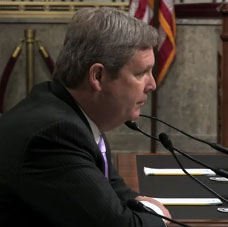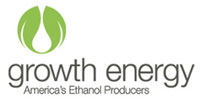The City of Marinette, Wis. Police Department is driving a propane autogas cruiser to save taxpayer dollars and use a clean-burning fuel alternative. With an estimated savings of more than $25 each time the vehicle refills, the city will potentially save $5,000 in fuel costs annually with just one propane vehicle on the road.

Charter Fuels, a Wisconsin-based partner in the national Alliance AutoGas network, coordinated the vehicle conversion and will provide clean-burning, affordable autogas fuel as part of the Alliance AutoGas complete program for fleets. Charter also held a training session to show Marinette police how to safely, effectively operate and fuel the new autogas-powered Ford Crown Victoria.
“We are extremely pleased to help the Marinette Police Department run on the most cost-effective alternative fuel technology on the market today,” said Bill Langlois of Charter Fuels. “The city will cut fuel costs by thousands of dollars, and the savings will be even greater if gasoline prices reach the $4 mark this year as many predict.”
![]()
Autogas is historically around $1 per gallon less than gasoline, and autogas fleets also report savings from reduced vehicle maintenance needs because autogas burns cleaner. Autogas conversions from Alliance utilize the bi-fuel Prins Vapor Sequential Injection (VSI) system, which allows drivers to revert to gasoline if an autogas fueling station cannot be reached when the tank is running low. The unique ability of the vapor system to be transferred from one vehicle to another, unlike many propane-dedicated liquid systems on the market today, makes it an especially viable option for fleets.
“We were able to lock in the price of propane autogas for an entire year, and not having to worry about the fluctuating price of gasoline and what it has done to our budget in the recent past was a big plus,” said Lt. Bryan Knapp with the City of Marinette. “Autogas is also a cleaner-burning fuel, reducing emissions into the environment, as well as causing less wear and tear on the engine. The useful life of the oil, spark plugs and other engine components is extended, saving money on vehicle maintenance.”


 The
The  In this edition of “The Ethanol Report,”
In this edition of “The Ethanol Report,” 
 The importance of biofuels to rural development was a focus of the first Farm Bill hearing by the Senate Committee on Agriculture this week.
The importance of biofuels to rural development was a focus of the first Farm Bill hearing by the Senate Committee on Agriculture this week. Fifteen percent ethanol blended motor fuel has gotten one step closer to commercial availability with
Fifteen percent ethanol blended motor fuel has gotten one step closer to commercial availability with 
 “American motorists are looking down the barrel of $5 a gallon gasoline this summer, all while foreign strongmen and dictators threaten to drive prices up even more by shutting down oil supplies. And yet we have the answer to this right here in front of us with American ethanol,” said Tom Buis, CEO of Growth Energy. “Ethanol is trading at about 75 cents a gallon cheaper than gasoline. We ought to be giving motorists here at home more choices at the pump. The choices are simple — stay chained to the whims of an Iranian strongman,or invest in clean, renewable, American-made energy with ethanol.”
“American motorists are looking down the barrel of $5 a gallon gasoline this summer, all while foreign strongmen and dictators threaten to drive prices up even more by shutting down oil supplies. And yet we have the answer to this right here in front of us with American ethanol,” said Tom Buis, CEO of Growth Energy. “Ethanol is trading at about 75 cents a gallon cheaper than gasoline. We ought to be giving motorists here at home more choices at the pump. The choices are simple — stay chained to the whims of an Iranian strongman,or invest in clean, renewable, American-made energy with ethanol.” UNICA reports that ethanol sales by mills in the South-Central region totaled 1.29 billion liters in January, a drop of 32.32% compared to the 1.90 billion liters sold during the same period in 2011. Of this year’s total for January, 1.24 billion liters remained in the domestic market and only 42.44 million liters were exported.
UNICA reports that ethanol sales by mills in the South-Central region totaled 1.29 billion liters in January, a drop of 32.32% compared to the 1.90 billion liters sold during the same period in 2011. Of this year’s total for January, 1.24 billion liters remained in the domestic market and only 42.44 million liters were exported.